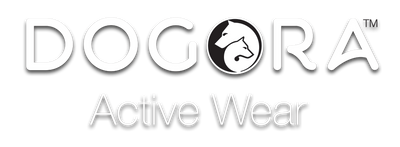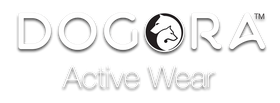Is the Elizabethan Cone Outdated?

If you have ever owned a dog or a cat, you’re most likely familiar with the Elizabethan Collar or Cone. The cone is a non-pharmaceutical, standard, preventative, veterinary intervention that was created to help shorten healing time in pets. It has been widely accepted by veterinarians and pet parents as the traditional preventive measure taken after surgery, despite the short-term inconvenience it can cause some animals. It is used to limit self-inflicted trauma by restricting your pet from licking and biting sutures after neuters and spays; along with protecting their heads from being scratched post-surgery; or to allow skin irritations like rashes to heal.
The cone should stay on until the site is fully healed and sutures have been removed. Remember to ask your vet before you decide when the cone can come off. A typical recovery time for your pet’s lesions to heal completely is between 10 to 14 days, however in some cases it may take less or more time than that.
Named after the lace collars or ruffs that were worn during the reign of Queen Elizabeth I, references to the use of the cone date back as early as 1897, however the “Plastic Cone” as we know it was developed in 1962 by Frank L. Johnson in the United States.
Wood, Leather or Steel; Even Buckets!
Although some may use the term “Cone of Shame” we must keep in mind there is no shame involved. Under the circumstances, the Elizabethan-Collar or Cone is required and one of the only means to avoid excess biting and licking which can act as a catalyst to create inflammation leading to secondary infection and suture removal. A properly fitted cone should extend past the muzzle of your pet while having a snug fit around their neck.
There's controversy about whether an animal's saliva speeds up healing. In small amounts its enzymes are known to help destroy cell walls of dangerous bacteria, delivering protease inhibitors and growth factors, thus promoting wound healing. So holistic vets will often say that licking wounds isn’t harmful. However, other vets maintain that after just a few licks it can become detrimental. What’s more, pets’ tongues contain little spines called papillae, which can destroy healing tissues when licked, slowing recovery. And persistent licking can become chronic and lead to chewing and nibbling that can damage stitches or cause secondary infection.
It is important to understand when to use the cone and, in some scenarios, an alternative and/or companion garment to help keep your best friends stress-free as they heal. To ensure a smooth recovery, the cone is used to put an end to the itch-lick cycle and should be used:
- Post-Surgery – Used clinically after most trunk related surgeries or injuries for a certain duration of time. Some examples of when the cone can be used is after a neuter/spay, obstruction surgery, cancer tumor/wart removals and dog-related extremity surgeries. **Reasons to use the cone are not limited to these examples. Be sure to ask your vet for advice and if its right for your pet.
- Irritations – It is clinically used to protect sores, hot spots, ECG recording equipment, control hyper-auto oral grooming, skin irritations, allergic reactions, bug bites and scratching of the head.
Do our Pets enjoy the Cone?
A study conducted in 2020, at the Sydney School of Veterinary Science(1), illustrated the impact of the cone on our pets’ quality of life. Conclusions of the study showed that 77% of owners (334 out of 434) felt that their pets’ quality of life was affected. This was related to one or all of the Five Domains Framework: Nutrition, Environment, Health, Behaviour and Mental State. Their online survey was aimed at owners whose pets had worn a cone during the previous 12 months.
Within the study, it was voiced by the owners that, while their dog wore the cone, it was associated with:
- Difficulty trying to eat and drink, requiring assistance. (60.2%)
- (10.4%) Noticed navigating and movement was inhibited.
- (25%) Noticed the cone helped promote health but also saw a risk of injury/skin irritation. (61.1%) Attributed injury related to itching/irritation and (23.9%) included head trauma due to bumping into walls, objects, falling down stairs and psychological distress.
- They noticed a restriction of several behaviours including positive states such as play.
- Many associated the cone with stress and depressed mood.
Ways to Combat Cone Distress
- Modify the cone to improve the comfort while reducing the risk of injury to your pet, e.g., add padding/bandaging around the outer and inner brim.
- Use a flexible, soft cone.
- Reduce stress and anxiety by purchasing the cone days prior to surgery and let your pet familiarize themselves with it in a healthy and positive environment -- if possible.
- Use an inflatable cone for more comfort.
- Use Post-Surgery Medical Clothing that has been recommended by your veterinarian.
If your dog experiences anxiety, is jumpy or doesn’t do well with people, or is bumping into or rubbing up against unknown objects, it’s probably best to look for a more natural/holistic alternative while your pet recovers versus the cone. Be sure to ask your vet if alternatives to the cone are right for your pet!
A pet-friendly alternative or companion to the cone is medical protective apparel. Medical clothing is clinically used by veterinarians after procedures much like the cone, while helping create a stress-free recovery.
Some common scenarios where medical protective apparel would be used in a clinic setting is post neuters/spays, obstruction surgeries, wart/tumor removals, any trunk related wounds/surgeries and to protect any licking against skin irritations, bug bites and allergies. It is not limited to these uses and also can be used to stop the itch-lick cycle when suffering from sores and wounds. This option provides worry-free protection, freedom of movement and comfort as your pet recovers.
Moreover, the surgical garment can also be used as an alternative to the cone for pets that suffer from any neurological muscle twitching i.e., head tumors can cause head tremors, thus helping to avoid hitting/bumping into walls. They can be a great alternative for dogs that suffer from cataracts or are mild to completely blind, creating a warped perception of space and distance.
They also serve as a great barrier when worn as a protective garment on your walks to guard against any environmental allergens such as pollen or bug bites they might suffer on your walks. Best of all, medical apparel can be re-purposed. Once your pet is fully recovered, he/she gets to enjoy the garment on cold winter nights to keep them warm and snug; on sunny days to protect their skin from UV exposure; or as a security outfit to feel comfort and reassurance through those scary thunderstorms full of thunder and lightning.
Use of the garment can also be coupled with a more sterile, post-surgery recovery site as a consequence of no direct contact with external bacteria or objects that can increase the risk of infection. This helps reduce your pets’ stress and anxiety, leading to a faster recovery while increasing their quality-of-life post-surgery or as they battle a skin allergy or infection. When nature calls, you can simply unbutton and roll back the fabric, re-securing when finished. At the end of your walk, be sure to check your pets’ surgical site or wound to make sure it is clean before securing the buttons. When purchasing your post-surgery medical protective apparel, be sure to purchase a vet-trusted brand or buy directly from your clinic.
For owners that notice their pets are chewing and/or biting on the fabric, an easy way to combat this response is to simply spray non-toxic bitters locally on the garment. If this does not act as a deterrent for your pet, please contact your veterinarian to see if there are any underlying problems and if the cone is a better option to use in combination with the garment to match your dog’s high energy and determination.
Our pets may not always make the correct decisions to benefit their own interests. That’s why we’re here for them!
Be sure to consult your Veterinarian for their recommendations and suggestions regarding alternatives or companions to the traditional cone to help combat the negative impacts associated with your pets’ recovery.
Help your pet have a memorable recovery; not a stressful one. With this being said, there is “No shame in the cone.” In some cases, for the safety of your pet, the cone is absolutely required. We wish your pets a healthy and happy recovery.
If you enjoyed this post and found it informative, please feel free to share it with your friends and follow us on social media:
Nicholas Mozas is Founder and CEO of DOGORA. He is a graduate of the University of Guelph in Biological Science and holds an M.Sc. in Neutragenomics. Nicholas managed an Animal Hospital after graduation, gaining a better understanding of pets’ and owners’ needs. Full disclosure: DOGORA has designed and developed the Medical Snuggie – an alternative or companion to the cone. Find out more at www.dogora.ca.
- Reference: Shenoda, Yustina, et al. “‘The Cone of Shame’: Welfare Implications of Elizabethan Collar Use on Dogs and Cats as Reported by Their Owners.” MDPI, Multidisciplinary Digital Publishing Institute, 20 Feb. 2020, mdpi.com/2076-2615/10/2/333.

